Books in a Series for Early & Late Beginning Readers
An update of a blog post from 2015, encouraging young readers
Some children jump quickly from the beginning stage of reading to where they can read more challenging books. Most of mine made the leap fairly quickly within a short space of time but a couple needed a longer period to make this transition. One of them took a few years to get to this stage.
During this stage children can be inspired to read more if they connect with characters in a story and know that there are more books with those same characters. Books in a series are really helpful for any child who has got the idea of reading but isn't yet reading fluently and confidently.
Books for Younger Children
Billy & Blaze by C.W.Anderson (1891-1971)
There are at least eight books in this series in print and Billy & Blaze is the first one. Sensitive stories about the adventures of a boy and his beloved horse and written by someone who knew a good deal about horses and how to care for them. Blaze Shows the Way is a sweet story where Billy & Blaze get alongside Tommy & Dusty and teach them the teamwork needed for jumping. Approximate age of interest - 8 years and under.
The Spindles books by Barry Chant
A series of books with a gospel message in the form of unique parables set in the outback of Australia that suit readers aged about 8 to 10 years. For non-Aussie readers these books are an interesting way to introduce children to the unique Australian wildlife and outback. A helpful glossary is provided in the back of the first six books with short explanations of Australian idioms and animals; average length of books - about 130 pages.
'What a pity that our education system often tends to restrict, rather than foster the delightful God-given imaginative creativity that most children have!' - Barry Chant
The Boxcar Children series by Gertrude Chandler Warner (1890-1979)
This is the first book in a series of nineteen and is available online at Project Gutenberg.
The books contain about 150 pages in good size print and they are great for younger readers. There's a list of the books and dates written here but it's best to read this book first and (I prefer to) stick to the books that were published during the author's lifetime:
Illustrations from the original book in the series:
When the fluency stage is taking a while...
I wanted to also mention books for older children who are not reading confidently yet.
One of our children (Hoggy) was a late reader and it took a few years for him to read fluently. He needed books appropriate for his age. Books such as Billy & Blaze just weren't suitable, but he was inspired to keep reading when we gave him books in a series that were complex enough to interest him but had characters that were familiar to him. The familiarity, knowing a little of what was to be expected, removed the barrier of starting a new book because he had already 'made friends' with its inhabitants.
I once asked my son what books had helped him the most during this (long) time of gaining reading fluency and his answer was the Tintin series.
Tintin by Hergé started out in 1929 and the author continued to write about Tintin and his adventures for over 50 years. His work portrays a great variety of geographical locations, political content and cultural situations.
All my children loved these books (which I don't think are in the same category as comics) but for Hoggy they weren't just entertainment. The illustrations made him curious enough to want to put an effort in to try to read the text, plus the stories were adventurous and interesting enough in their own right to keep him persistent in his reading.
The Adventures of Tintin in the Land of the Soviets, the first in the series, is a favourite in our home. Adults enjoy Tintin but are sometimes quick to point out the author's 'incorrectness.' Children just read them and enjoy the stories without taking on the views and prejudices of a different generation.
These hardback copies have three books in one volume.
The Asterix Series - written by René Goscinny and illustrated by Albert Uderzo and first published in 1959, follows the exploits of a village of ancient Gauls as they resist Roman occupation.
Asterix, the warrior hero, gets his superhuman strength from the magic potion brewed by Getafix, the village Druid. Obelix, Asterix’s inseparable friend, and his constant companion, Dogamix, are always ready to accompany the little warrior. Then there are Cacophonix, the Bard, and Vitalstatistix, the chief of the tribe. I think the books are a linguistic feast for kids and a lot of fun for anyone…Unhygienix, Impedimenta, Geriatrix, Fulliautomatix…
Some other books in a series that have enough substance for slightly older readers who are still working on fluency:
The Sugar Creek Gang series by Paul Hutchens
These books have been around for many years and my boys loved them around the ages of 8 to 10 years but they would be suitable even up to around age 12 or even older for a later reader. The first book was published in 1940 and the last in 1970 and there are 36 books in the series (see here for a list of them). Each book features the 'gang' and my boys became familiar with the characters and they each had their favourites.
The books were re-printed around 1995 and some changes were made to make them more 'acceptable' to the present day (I think some references to 'getting a licking' etc. were taken out). We have some of the books from the pre-politically correct days but the later versions still have some merit, I think, although the older books would be my preference.
Just be aware that there's a series called 'The New Sugar Creek Gang' which are not by Paul Hutchens.
Sugar Creek is a real location in Indiana, USA.
The books below are Moody Press editions published in 1967 & 1973:
The Indian Cemetry below is one of the revised editions published in 1998 with changes ('minor' according to the website I linked to above) made by the author's daughter, Pauline Hutchens.
Childhood of Famous Americans are a series of books by various authors about different people but the series is consistent in the way the subjects are approached and in the level of writing, which is targeted to ages 8 to 12 years of age.
These fictionalised biographies are about the childhoods of famous Americans or people who eventually identified with America - Albert Einstein, for instance, who fled Hitler's Germany as an adult and later became an American citizen. There's a legion of books in this series, and although some of them would be more interesting for children in America, there are many individuals who have universal appeal. The books are around 190 pages in length and are printed in a largish font which makes for easy on the eyes reading. Black & white illustrations throughout.
Some of my children's favourites in this series are:
Thomas A. Edison, Neil Armstrong, Clara Barton, Henry Ford, Buffalo Bill, Daniel Boone, Benjamin Franklin, Harriet Tubman, Wilbur and Orville Wright and Albert Einstein.
Viking Quest series by Lois Walfrid Johnson - exciting stories of Viking times by a Christian author. These books are recommended for readers up to about 12 years of age but reluctant older readers would enjoy them also. There are five that I am aware of.
The Redwall Series by Brian Jacques
Warning! These books are highly addictive. "Wot, wot!' I can’t get my tongue around the dialogues to read them aloud, but Dad read one to the boys when they were younger (he also had a good laugh over a couple he read on his own). Even though they are quite challenging for children who are not yet fluent readers they are a wonderful incentive for reluctant readers to be drawn into a higher level of reading. Filled with all the stuff boys like - food, feasting, songs, more food, quirky language, humour, fights and adventure.
I was very interested to read the author's background and his introduction to classic poetry at the age of fourteen. As a child growing up under the shadow of the second World War in Great Britain, he went through food shortages and nightly air raids and his stories remedied those concerns he had as a young lad. Filled with elaborate feasting and song, the triumph of good over evil is a strong element running through his books. I’ve linked to the current Redwall website above, but I read more detail about the author’s background on a website that isn’t available anymore.
According to my resident Redwall experts, the following six books lay a foundation for the Redwall series. You can then read the other books to fill in all the details as they all branch off from the these.
1) Martin the Warrior
2) Mossflower
3) Redwall
4) Mattimeo
5) Salamandstrom
6) The Long Patrol
We also have The Redwall Cookbook and it helped get our less interested boys into the kitchen experimenting. In the Redwall stories the food has as much a part of the saga as the battle, the quest, the poems, the riddles, and the songs.
Some suggestions to those who have older reluctant or struggling readers:
* Don't despair
* Read aloud books that are beyond their ability - every day. If you're not able to do this, get some quality audio books. Hoggy listened to Treasure Island when he was recovering from being sick and a few days later he took the book off the shelf and slowly worked his way through it. This was a significant shift for him.
* Check out Dianne Craft's Website especially, Is My Child Just a Late Bloomer? We didn't have any access to information such as this when we started homeschooling so it isn’t something I’ve used but I could identify some of the issues we had when I read through some of her content.
* Work through a good intensive phonics course. Some children learn to read easily enough or without too much drama, but there are others who need an intensive, systematic approach. And they shouldn’t cost you the earth! Some I’m familiar with:
Alphaphonics by Samuel Blumenfeld
Step by Step Reading: A 50 Step Guide to Teach Reading with Synthetic Phonics by Mona McNee - out of print but available secondhand or free online. The author used this method with her son who has Down’s syndrome after his school claimed he could not be taught to read. Synthetic phonics saved her son from a life of illiteracy.
The Writing Road to Reading by Romalda Spalding - a multisensory approach. I used an older edition (4th Rev ed.) and taught my children the phonograms (single letters & multiple letters e.g. ‘‘sh’’ igh” and ‘‘ough”) that make up the sounds of the English language. This week I’ve started going through it with my 6 & a half year old grandson to help him with his handwriting and spelling. It’s not exactly user friendly but workable after reading it through.
* Regular oral narration was a powerful tool for us. At one stage I was reading just about everything aloud to my non-reader/writer but I had him narrate the books I used for his lessons afterwards. I continued to require oral narrations for some books even when my kids could read well. Sometimes I do it myself because it’s an act of assimilating knowledge.
* Let them hear beautiful language from various types of literature - classic books, poetry, Bible. I've always made a point of reading aloud books that would be a challenge for my children to read independently, books they probably wouldn't have chosen themselves, or those which are high quality but need a little editing here and there.
* Play board games such as Articulate, Boggle, and others that connect to language.
If you would like to support my writing you may make a donation here:




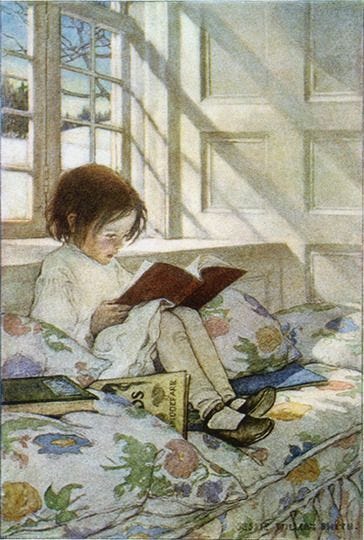

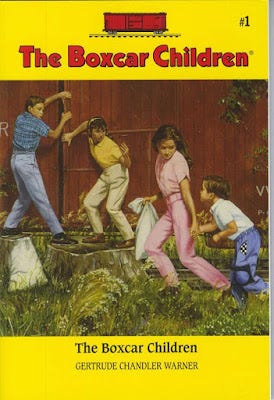

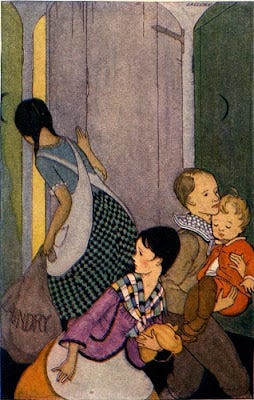

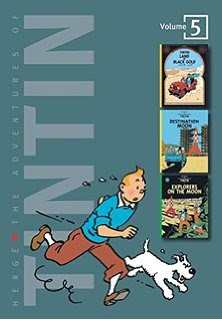
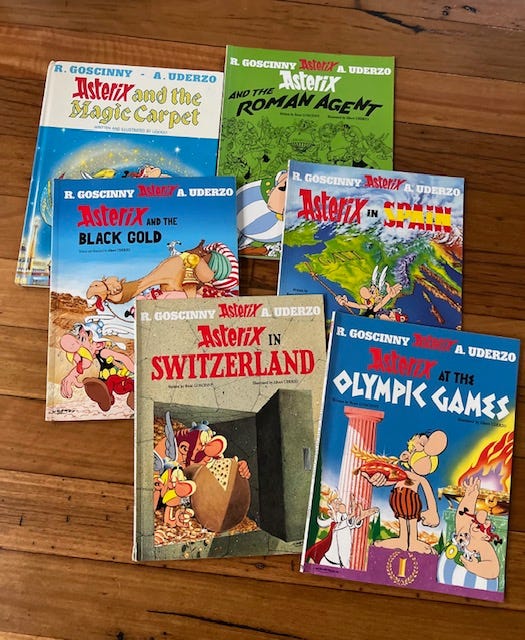
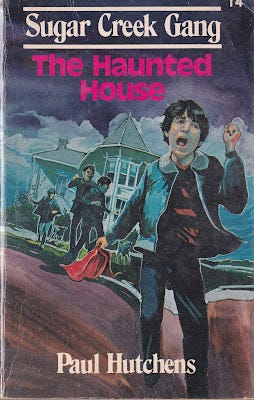
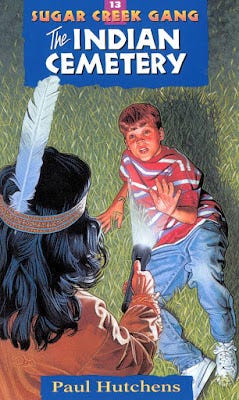
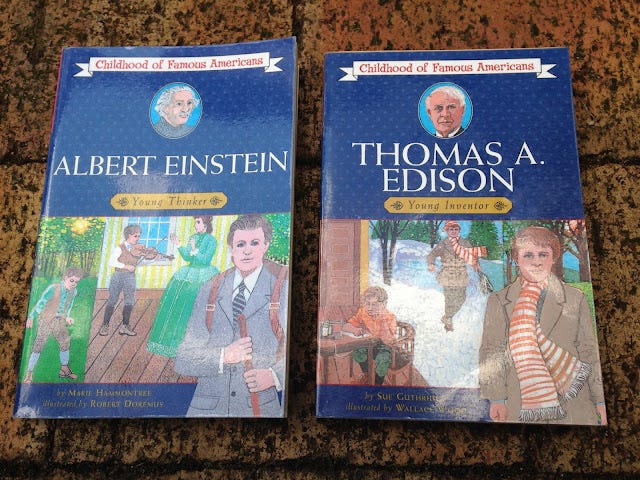

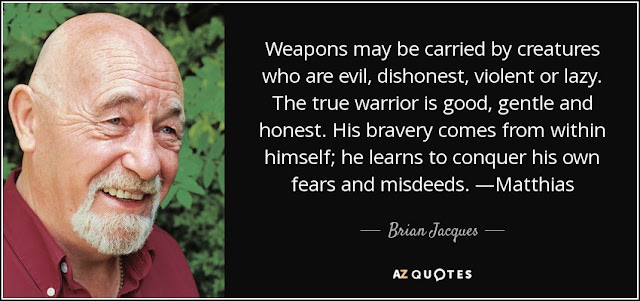

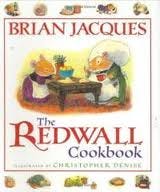
I indeed read most of these with my kids!
So many favorites listed here! Took me down memory lane when we homeschooled. 💕 I’ve kept them for the grandkids to read.